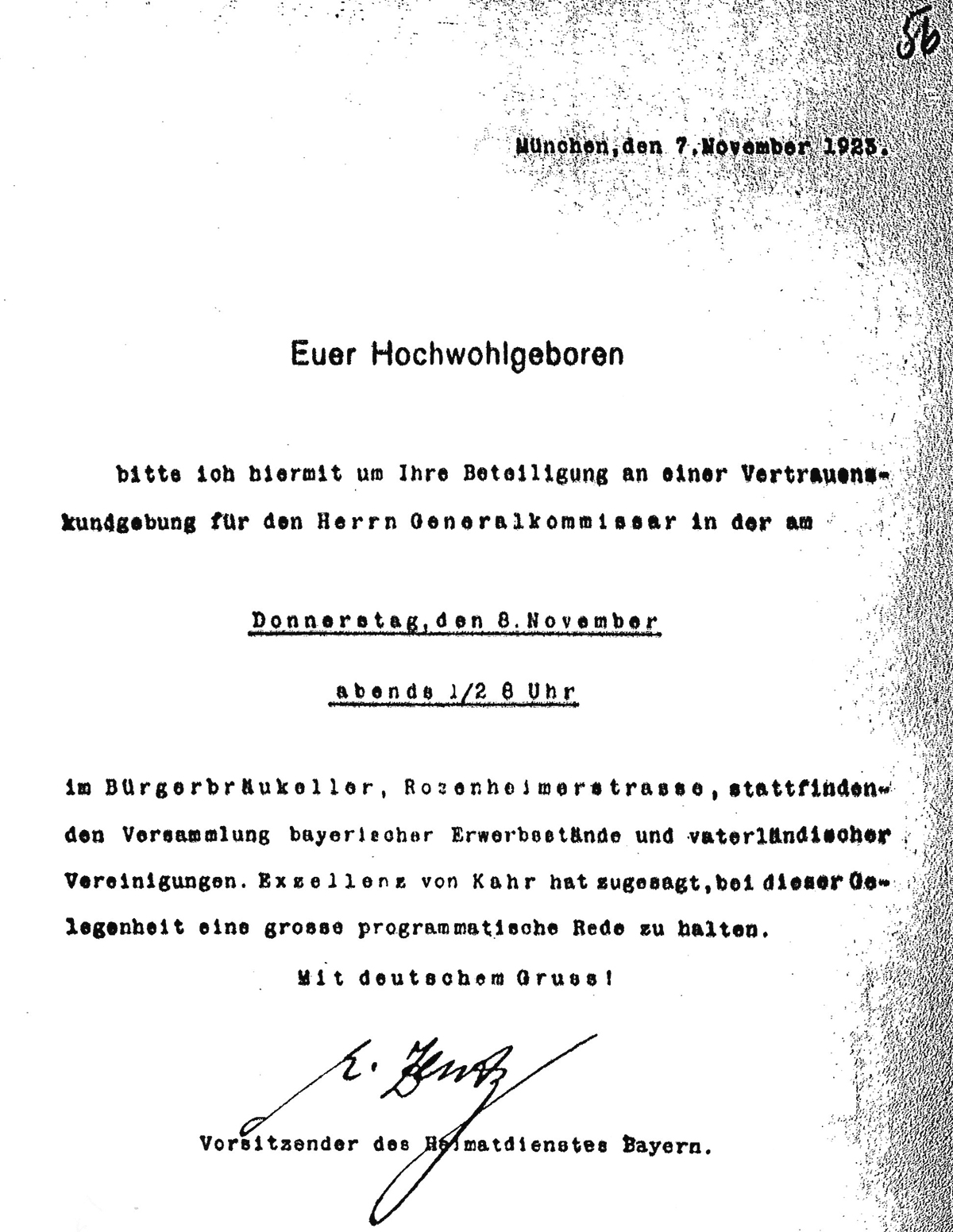

Rare surviving copy of an invitation to the Bürgerbräu beer hall on the night of November 8, 1923.
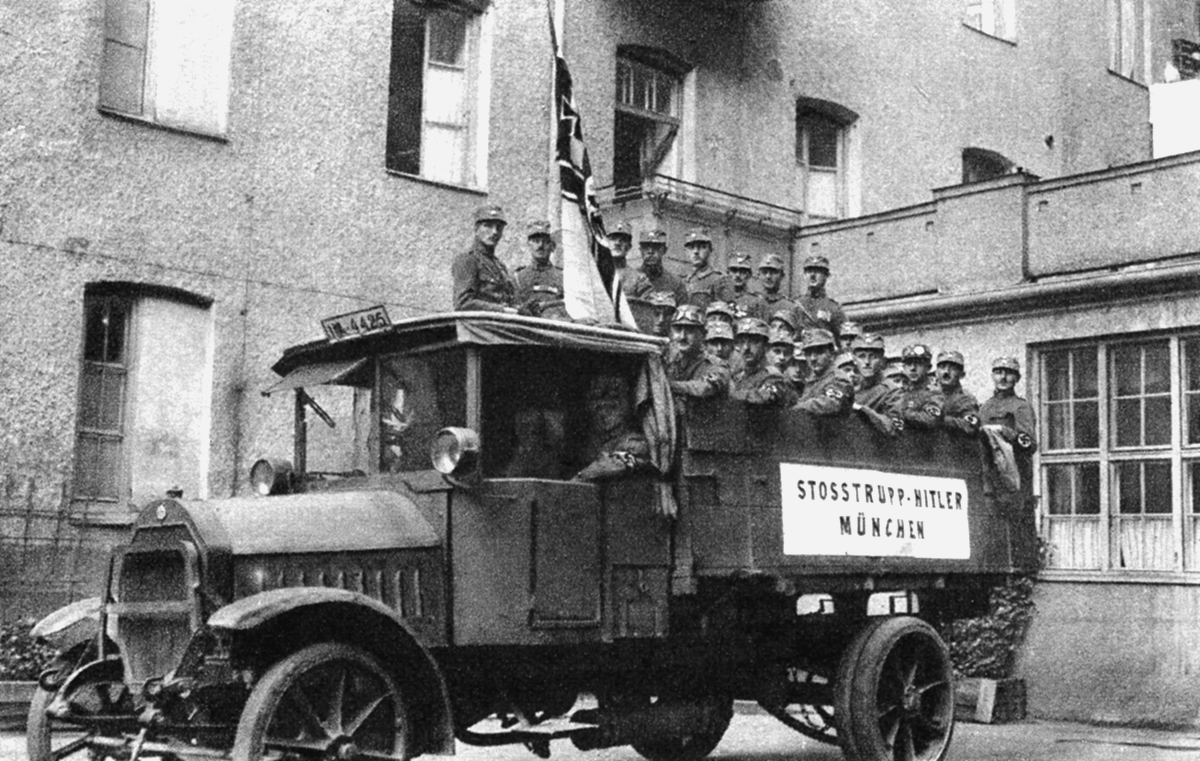
The Stosstrupp Hitler, the shock troops who overpowered the police and seized control of the beer hall.

Members of the Stosstrupp Hitler take Munich’s city councilmen hostage.
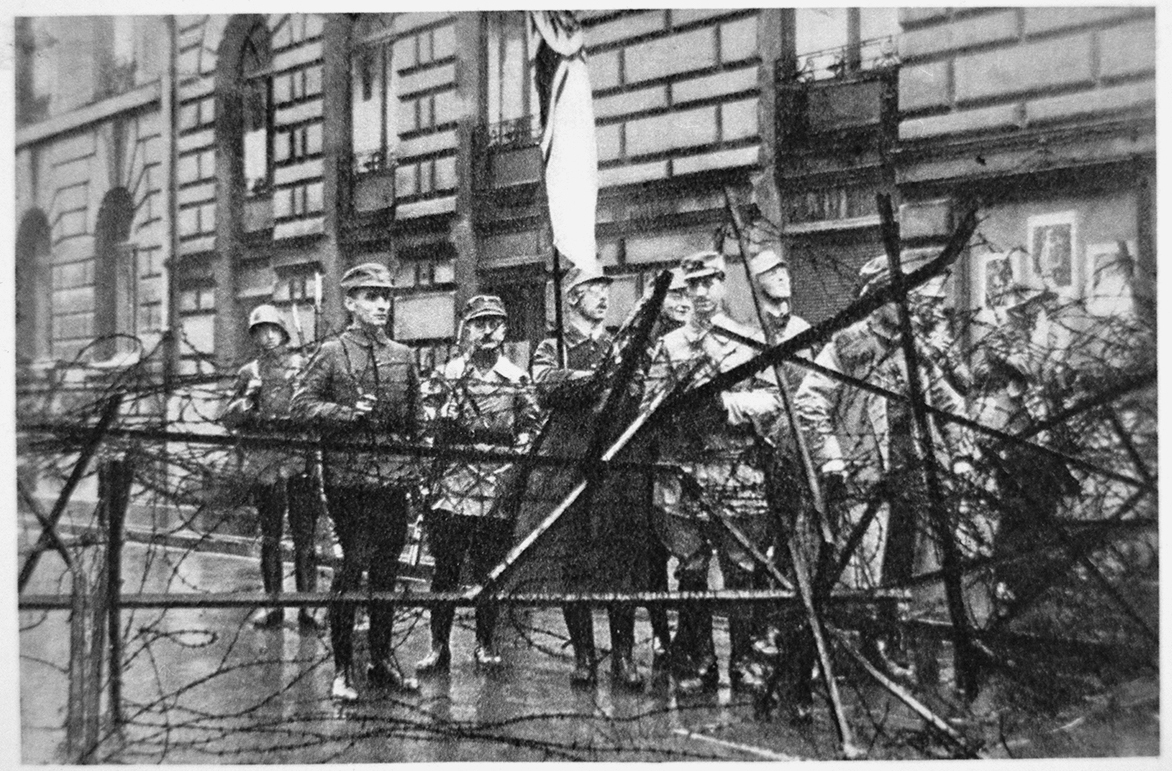
Captain Ernst Röhm’s troops barricade the captured War Ministry. The soldier holding the banner is young Heinrich Himmler.
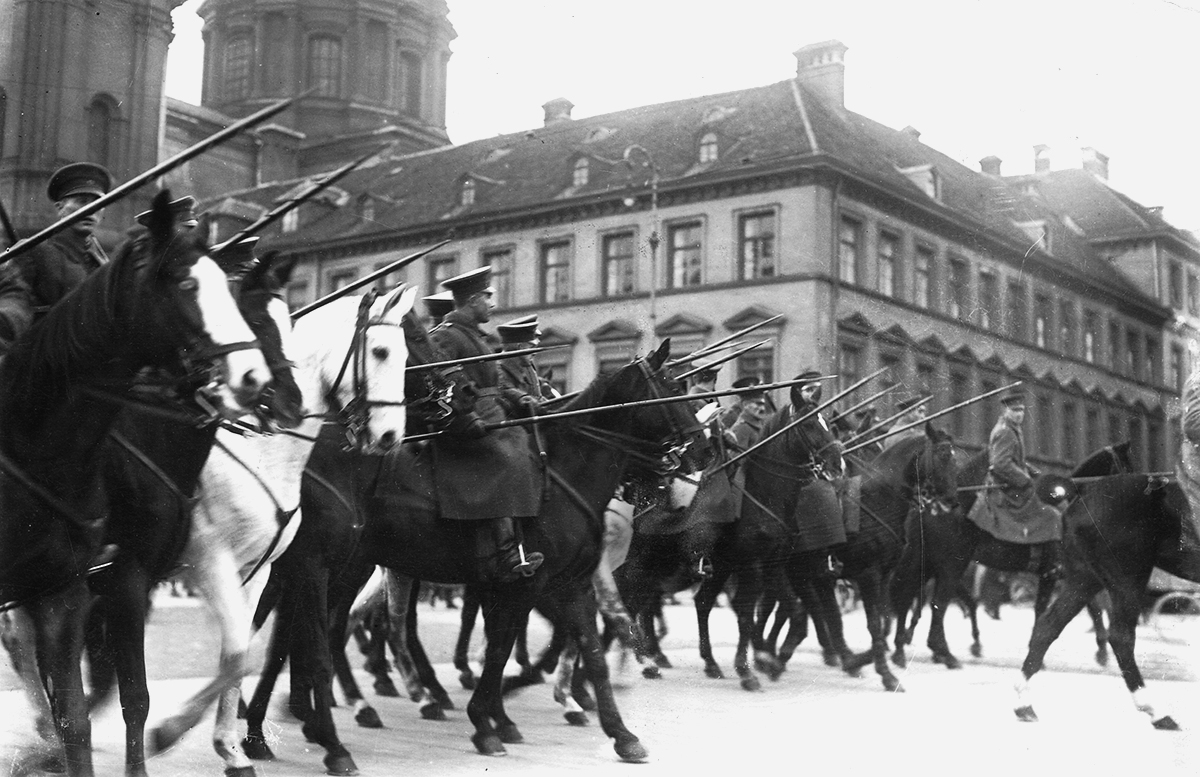
Mounted police clear the streets on the morning of November 9, 1923. Rumors circulated that Hitler had been killed or had withdrawn to rally supporters for another attack on Munich.
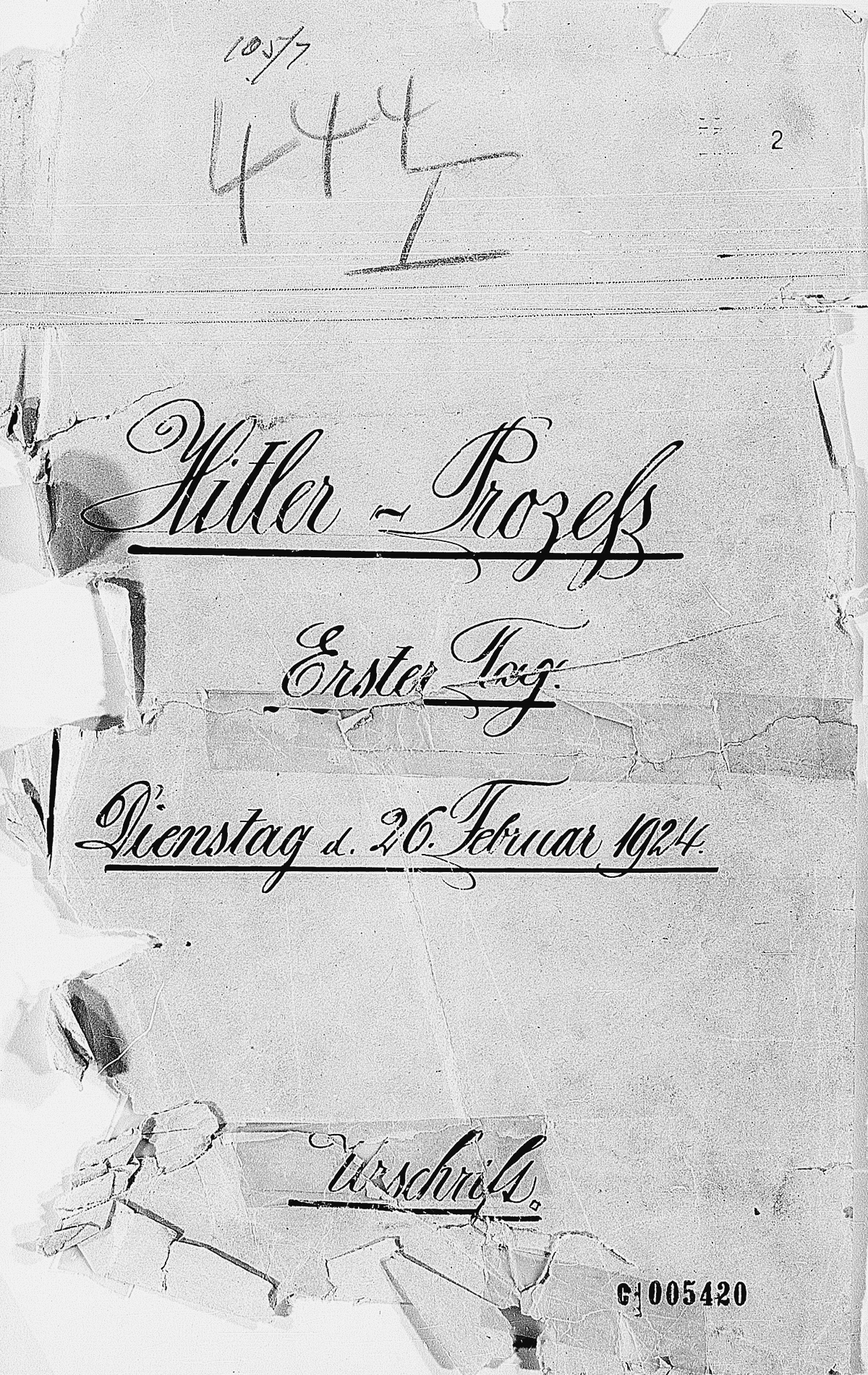
The official transcript of the Hitler trial spans nearly 3,000 pages.
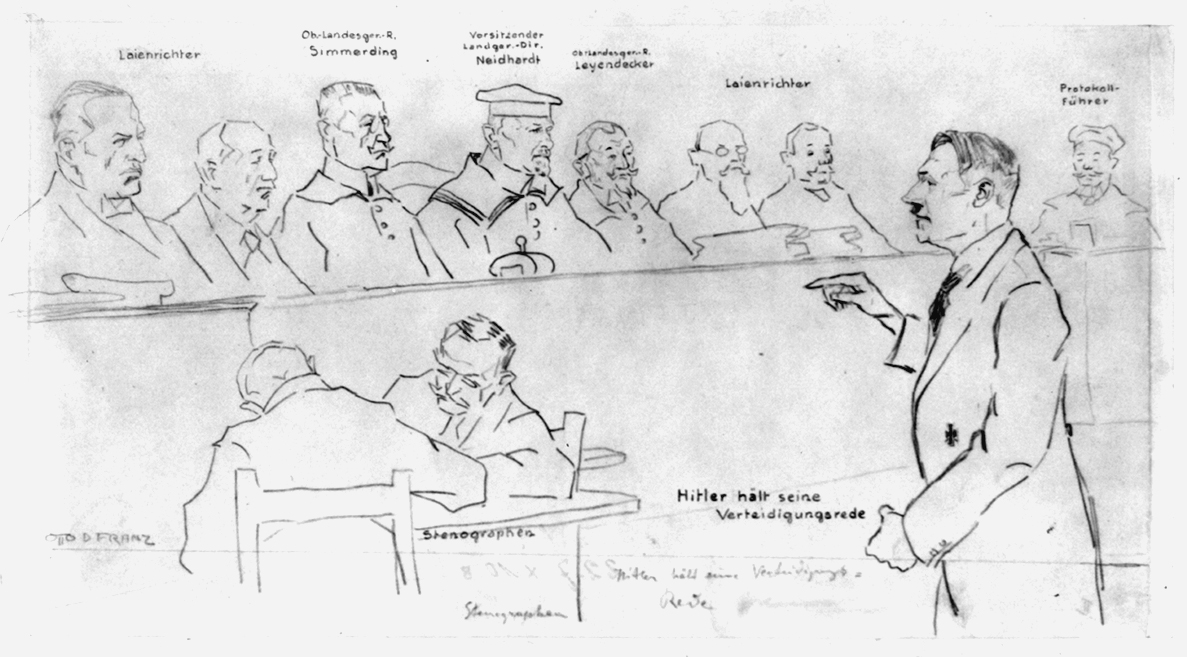
Adolf Hitler addresses the court. At the small table, stenographers record the proceedings.
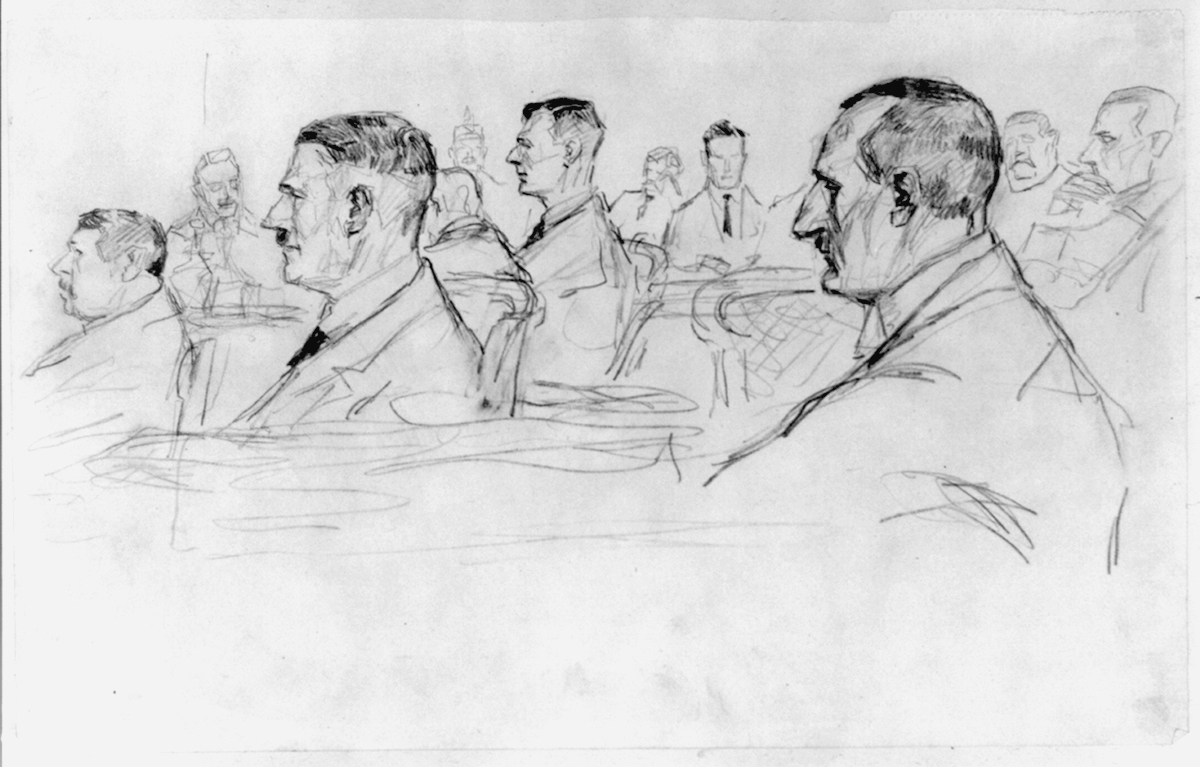
Hitler and his lawyer, Lorenz Roder (right), who was not paid in full for his legal services until after Hitler came to power. This drawing, and the following two, are rare illustrations of the Hitler trial by the artist Otto D. Franz.

Deputy prosecutor Hans Ehard (right) faced formidable challenges in his efforts to prosecute Adolf Hitler. On the left sits chief prosecutor Ludwig Stenglein.
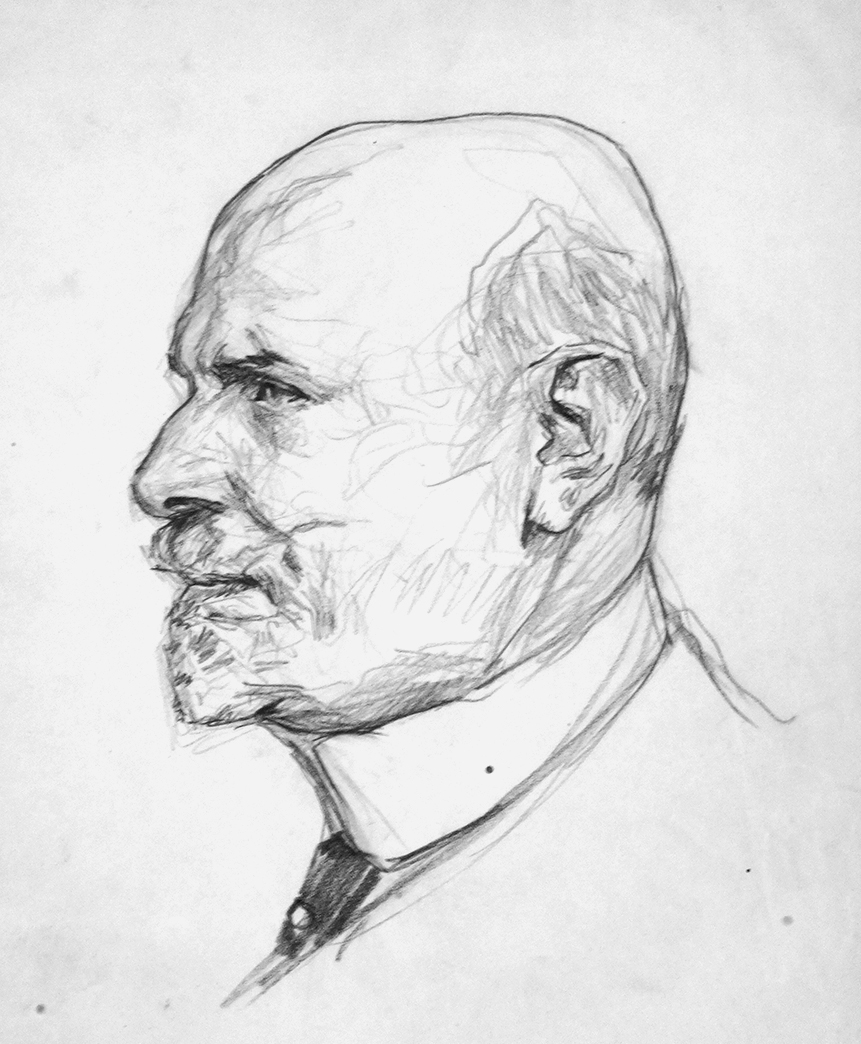
Presiding judge Georg Neithardt. Thanks to his right-wing sympathies as well as the extensive media coverage, Hitler would reach an audience at the trial far larger than anything he had ever before experienced.

A never-before-published sketch by Carl August Jäger captures a fretful Hitler during the trial as he faced deportation from Germany.
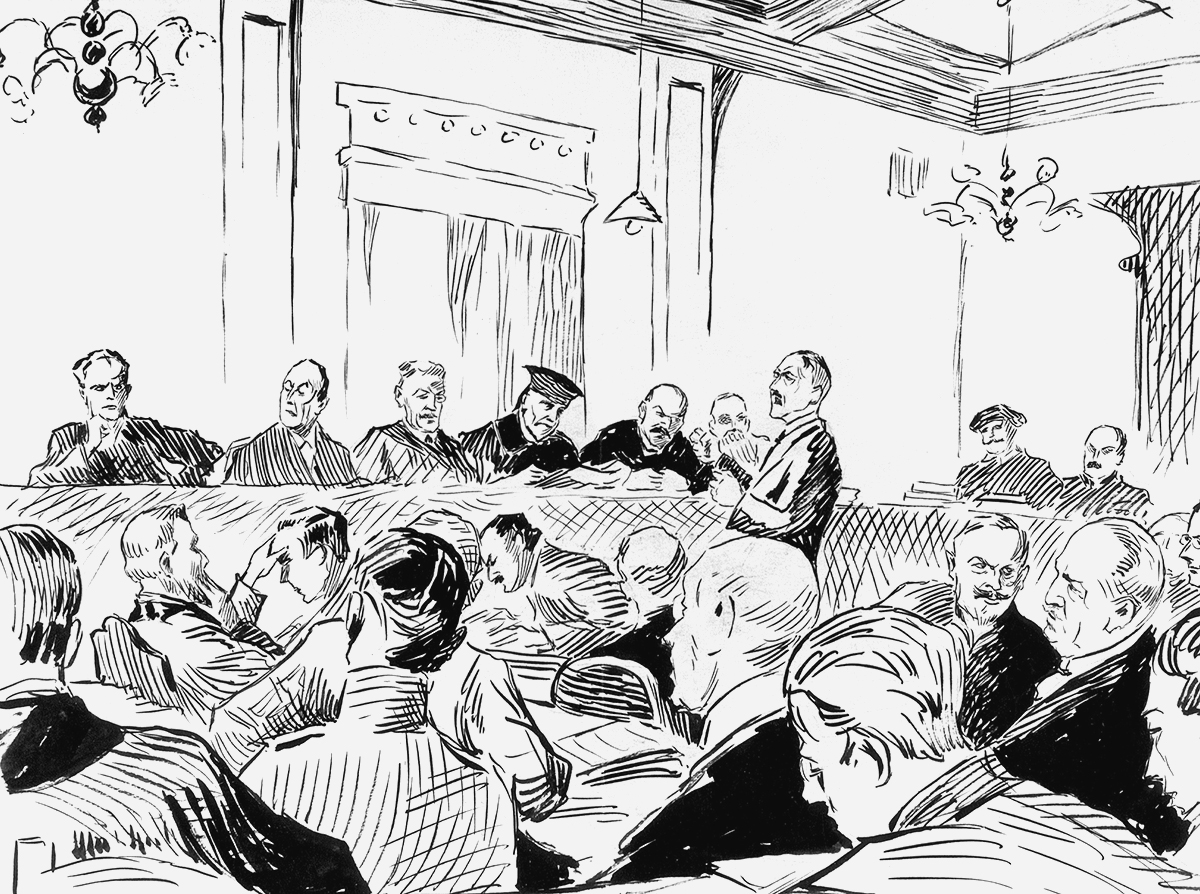
Who was on trial, critics asked, Hitler or the Weimar Republic? This illustration of the tumultuous proceedings has not been published since it appeared in Münchner Neueste Nachrichten in 1924.

Photography was prohibited inside the courtroom, though a handful of people smuggled in cameras. This is one of the better shots of the trial in session.
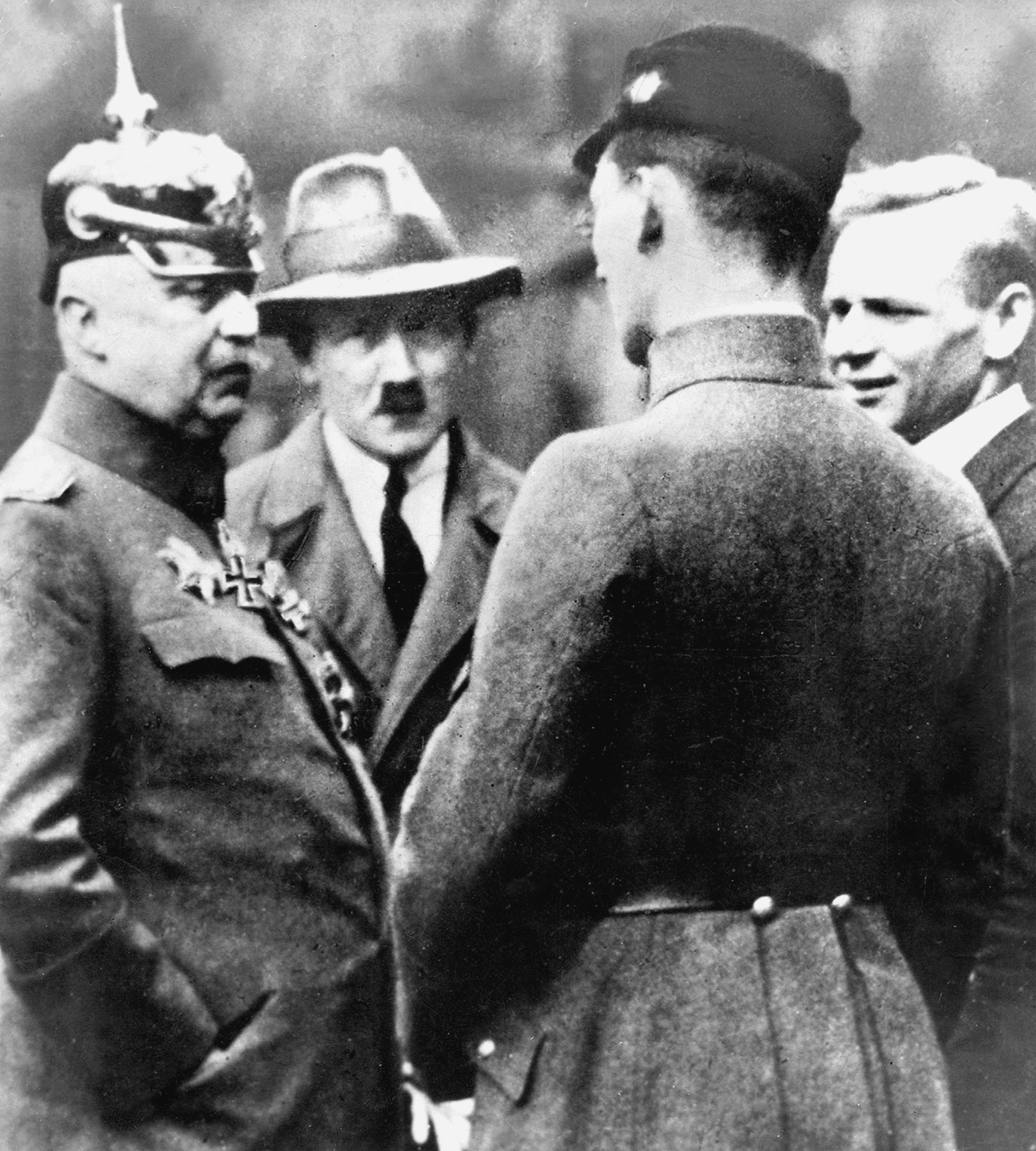
Hitler, Ludendorff, and codefendants in discussion during a break.

Security was again heightened as the trial approached its conclusion.

Adolf Hitler and fellow defendants assemble in the courtyard before the announcement of the verdict: (left to right) Heinz Pernet, Friedrich Weber, Wilhelm Frick, Hermann Kriebel, Erich Ludendorff, Adolf Hitler, Wilhelm Brückner, Ernst Röhm, and Robert Wagner. One defendant, Ernst Pöhner, was absent.
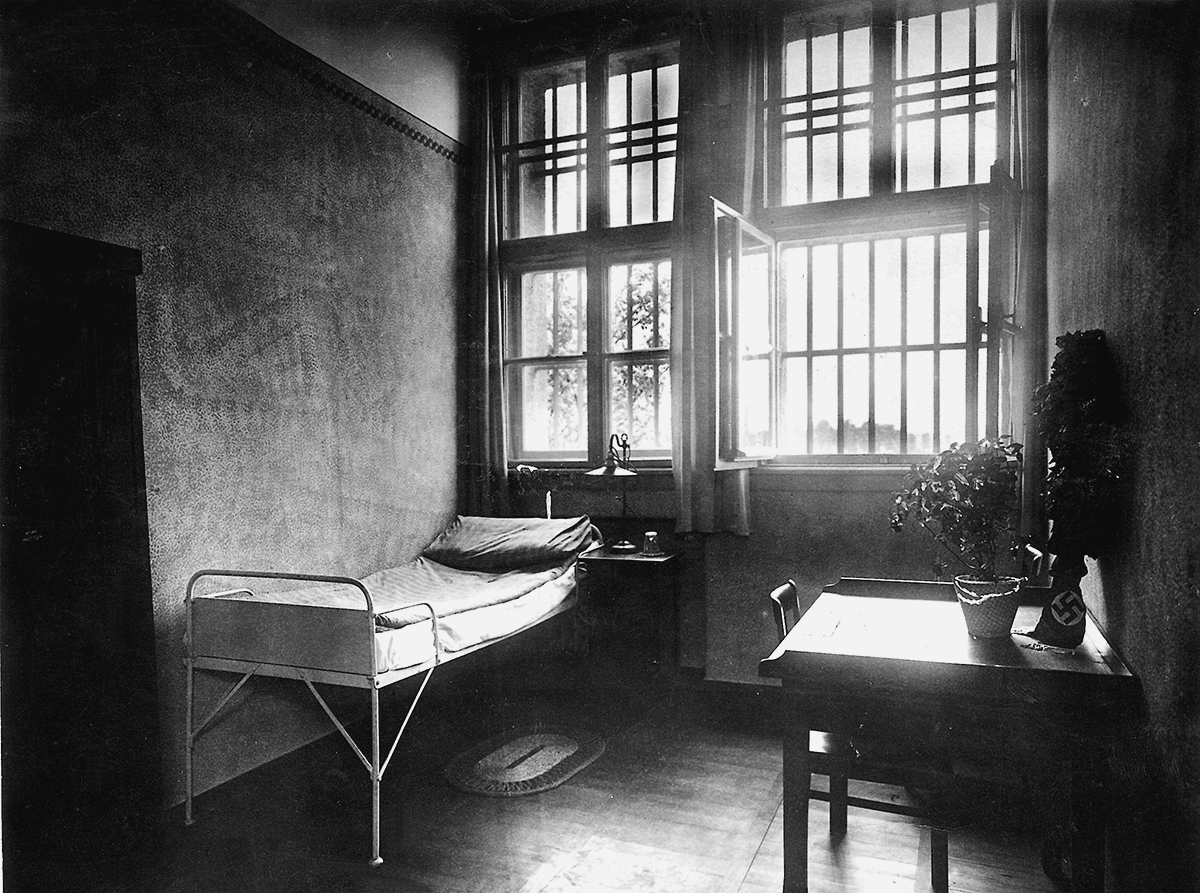
Photograph of Hitler’s cell, which was later decorated with the props of a typewriter and Nazi flag. After Hitler was released, fellow defendant Ernst Pöhner briefly served time in this cell.
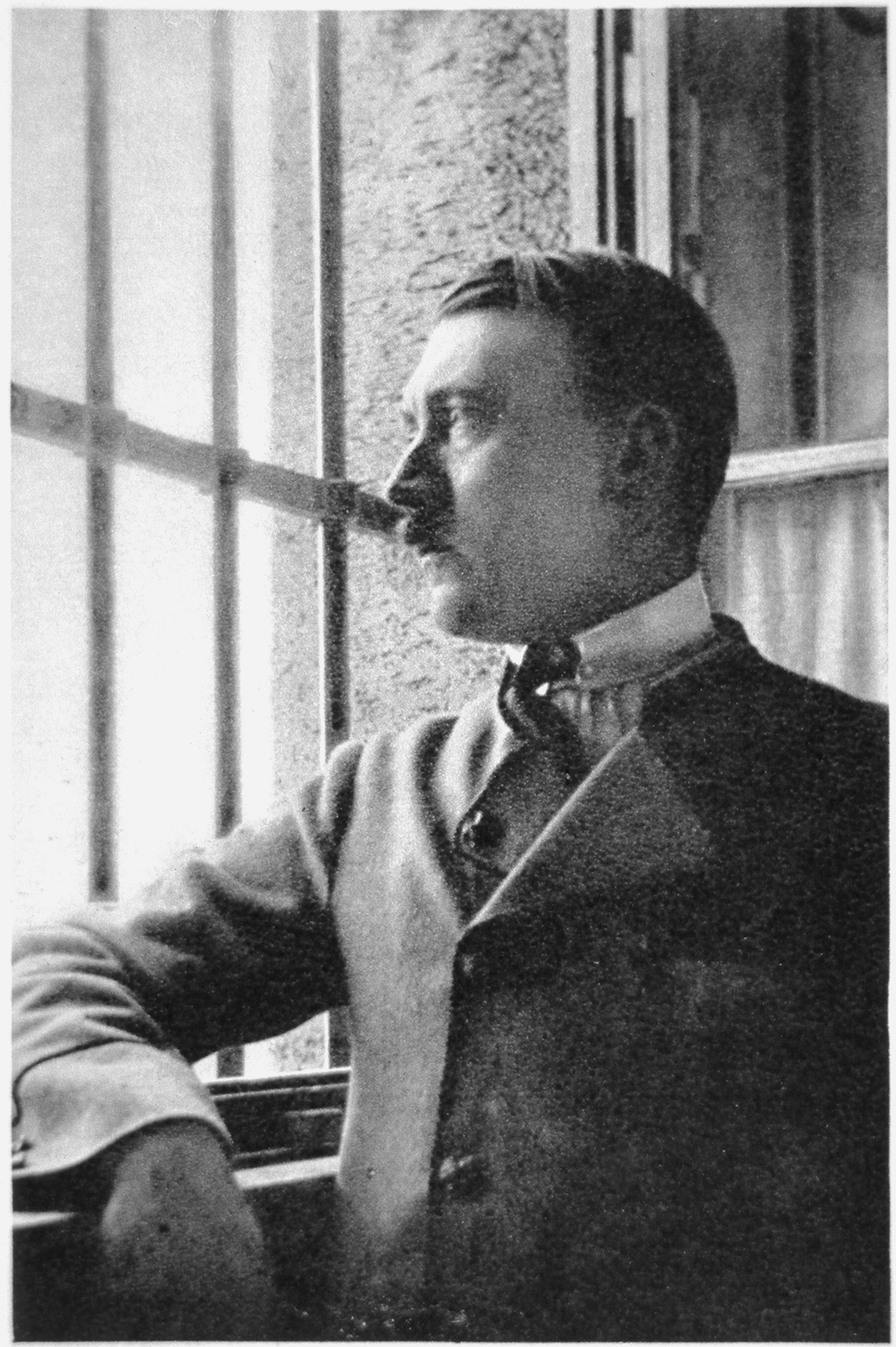
Hitler in his cell at Landsberg.
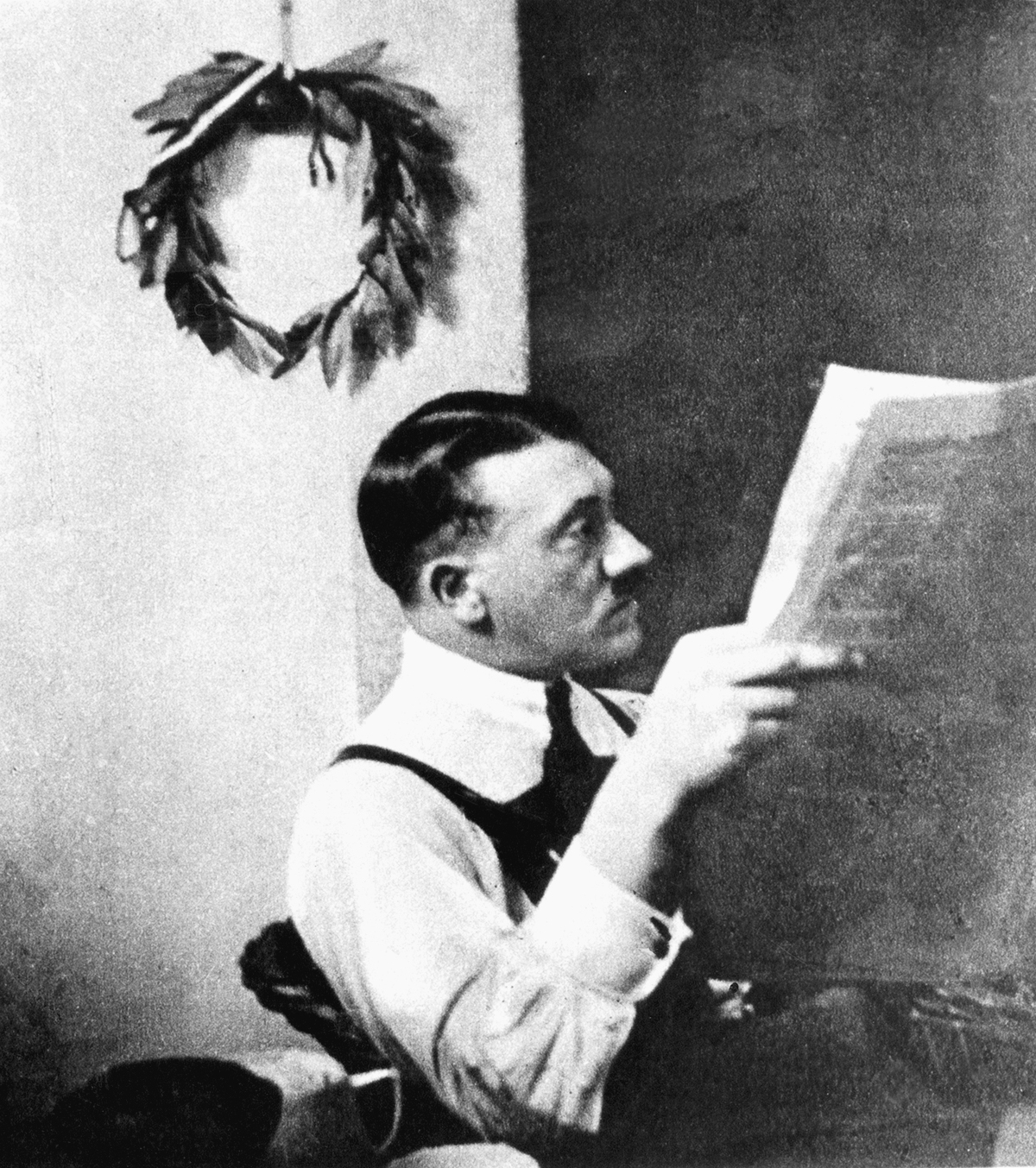
At Landsberg, Hitler read, entertained visitors, and worked on his book, Mein Kampf. Hitler called his time in prison his university education at state expense.
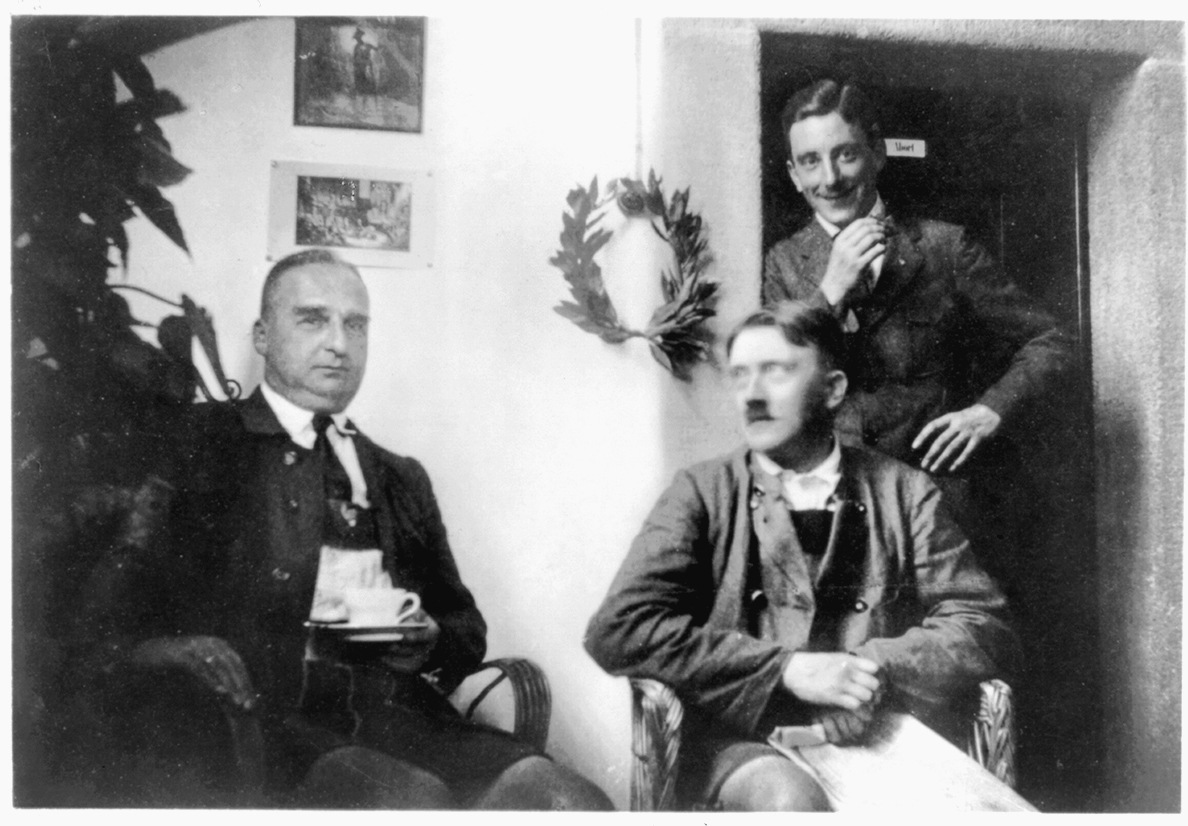
Adolf Hitler and fellow inmates while away the hours at Landsberg. Emil Maurice, standing, played in the prisoner band. Hermann Kriebel, cup in hand, wrote for the prisoner newspaper. On one occasion, the inmates performed a parody of the trial, which ended by sentencing Hitler to deportation—from Landsberg.
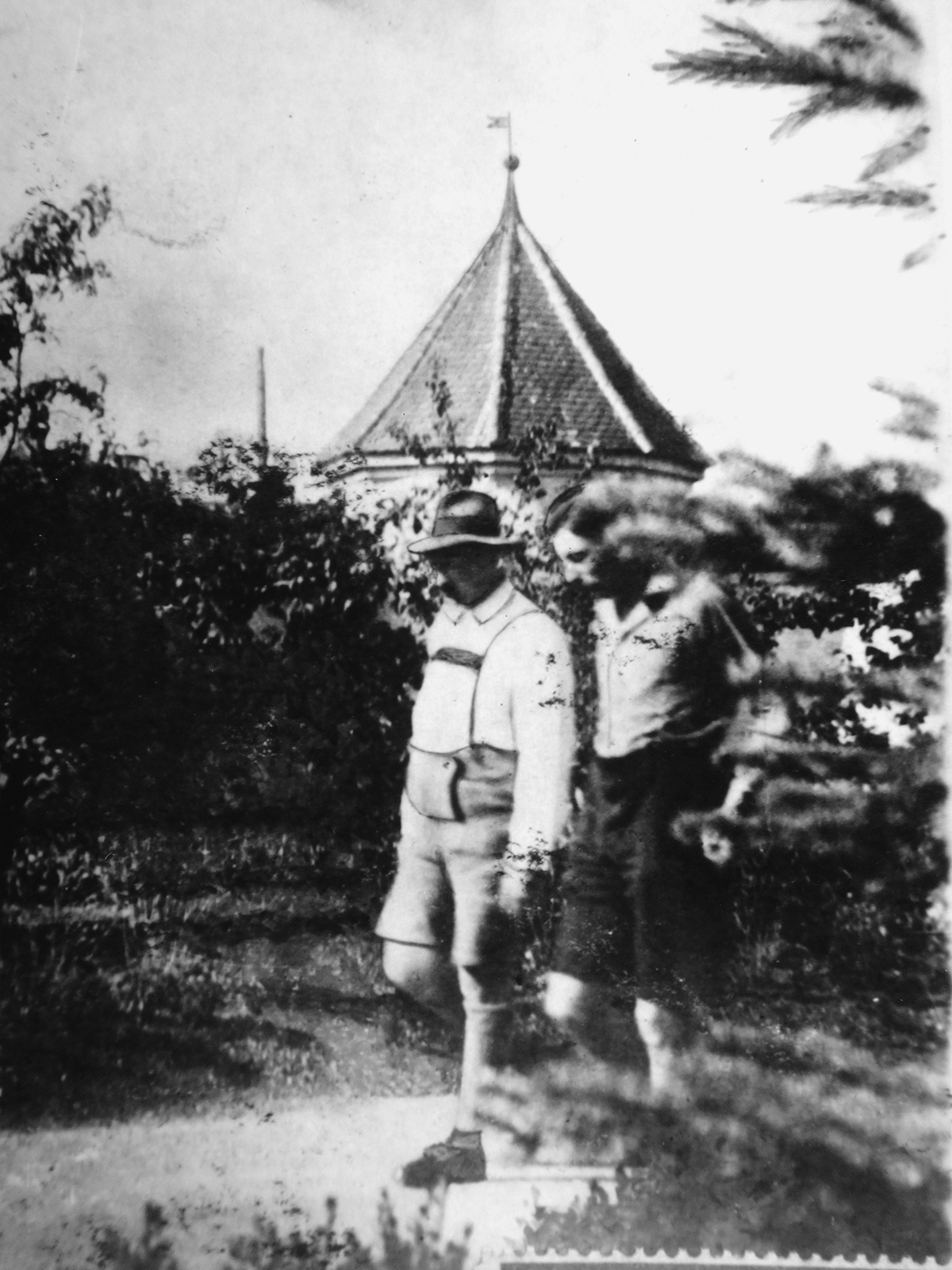
Hitler walks in the garden with Emil Maurice, his chauffeur and first leader of the Storm Troopers. Landsberg prisoners had plenty of time to reassess (and reinvent) the past and plot the future.
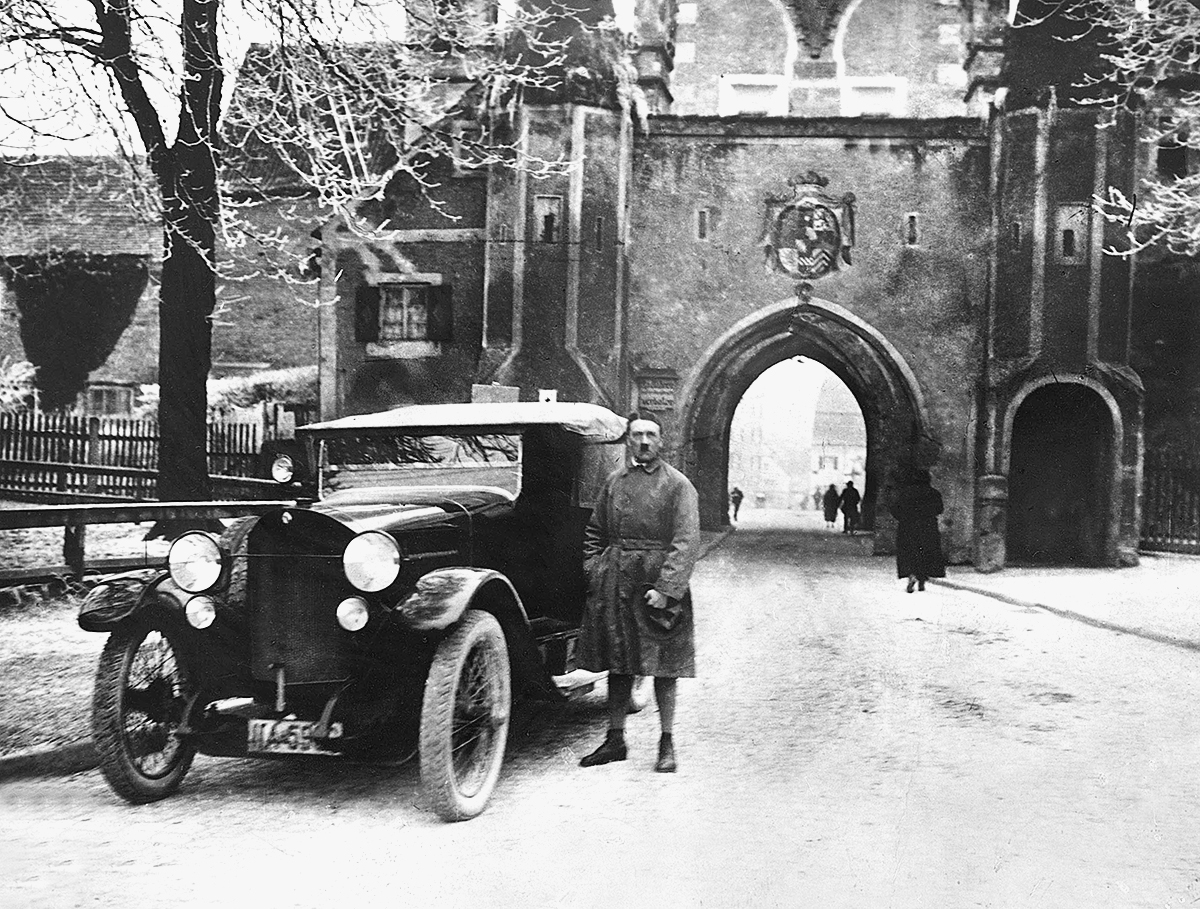
On December 20, 1924, Hitler leaves Landsberg as a free man.